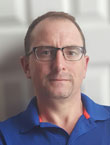RF Shield Enclosure Design Concepts for Electrical Engineers
Click here to download a copy of the presentation.
Overview:
Many times these days, Electrical Engineers are tasked by sheer necessity with designing mechanical sheet metal parts when they need to specify a shielding enclosure. Some off-the-shelf shielding solutions are available in the marketplace but those are frequently not useful when the board is already designed and manufactured or size or other performance constraints do not allow for the use of a one-size-fits-all shield. In most cases a custom shield can be produced more quickly and for less money than an off the shelf product can be obtained. This webinar will cover RF shield design considerations, sheet metal design rules for RF shield cans, and a discussion of how metal bends in full-thickness and half-etched bend line configurations.
Who Should Attend?
Engineers who are involved in specifying or designing sheet metal RF shield enclosures or want a greater understanding of how sheet metal bends.
 Speaker: Jamie Howton
Speaker: Jamie Howton
Jamie Howton grew up in England and was trained as a draughtsman back when they still used pencils and spelled it like that; he was a Sea Cadet and emigrated to the USA at the age of 16 with a sum total of $66. Jamie has worked in the photo-etching industry (and at Fotofab in one capacity or another) since 1987. He was hired to design phototools and within two weeks was the tooling department supervisor. Jamie was repeatedly promoted despite his best attempts to find work elsewhere, and once that reality had set-in he dropped out of college (Columbia College, Chicago – Fiction Writing Program) to lead Fotofab’s growth from a founder-run job shop to a professionally managed, world leader in rapid delivery of precision metal parts. Jamie has worked in and managed every operational position at Fotofab; he understands sheet metal part manufacturing and the photo-etching process intimately. In 2000 Jamie Howton and Dan Brumlik lead the management buy out of Fotofabrication Corporation from its founders. Jamie ran the company as President until 2011 when he moved into the Chief Technical officer role. Since 2000 the partnership group has grown to four partners and four manufacturing companies under our management – all manufacture solely in the USA. We are dedicated to helping grow US based manufacturing – So our grandchildren have some place to work. Jamie (and Fotofab) were featured in season 14 episode 32 of “Modern Marvels – Acid” which first aired on the History Channel in 1993.
The following are questions presented to the speaker by the attendees during the webinar, along with answers to each.
Select each question to view the corresponding response.
What is the permissible ratio of a circular hole diameter to the wavelength of the RF?
Answer: I don’t know the answer to this. I imagine that the answer has other variables which will affect the outcome but I have not been involved in the EMC testing side of things.
Does Fotofab provide the spring leads, and is the concept to pinch it together to release the lid?
Answer: Yes, Fotofab does provide spring leads, the concept is that it provides a friction-fit method for attaching a shield to a board by inserting spring fingers into via holes on the board.
You didn’t discuss frequency. How does this factor into plating?
Answer: No, I didn’t, that wasn’t the focus of the webinar and I’m not in any way an expert on that. I don’t believe that electroplating has much effect on shielding at all, except as I pointed out – corrosion resitance and solderability.
Can you discuss the upcharge for adding holes or tabs or part numbers–any features added to your process?
Answer: Fotofab manufactures parts via several different manufacturing processes. For photoetching there is no additional charge for additional features. For metal stamping adding features does add cost.
Jamie, what is the least expensive material used for shielding? And, most common material used for shielding?
Answer: We probably see Tin-plated brass and Nickel Silver more than other materials. They are both inexpensive and readily available in a wide range of thicknesses.
